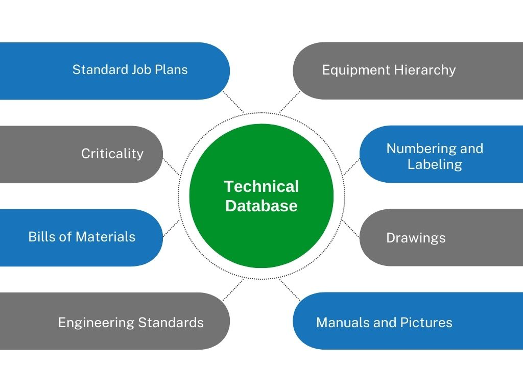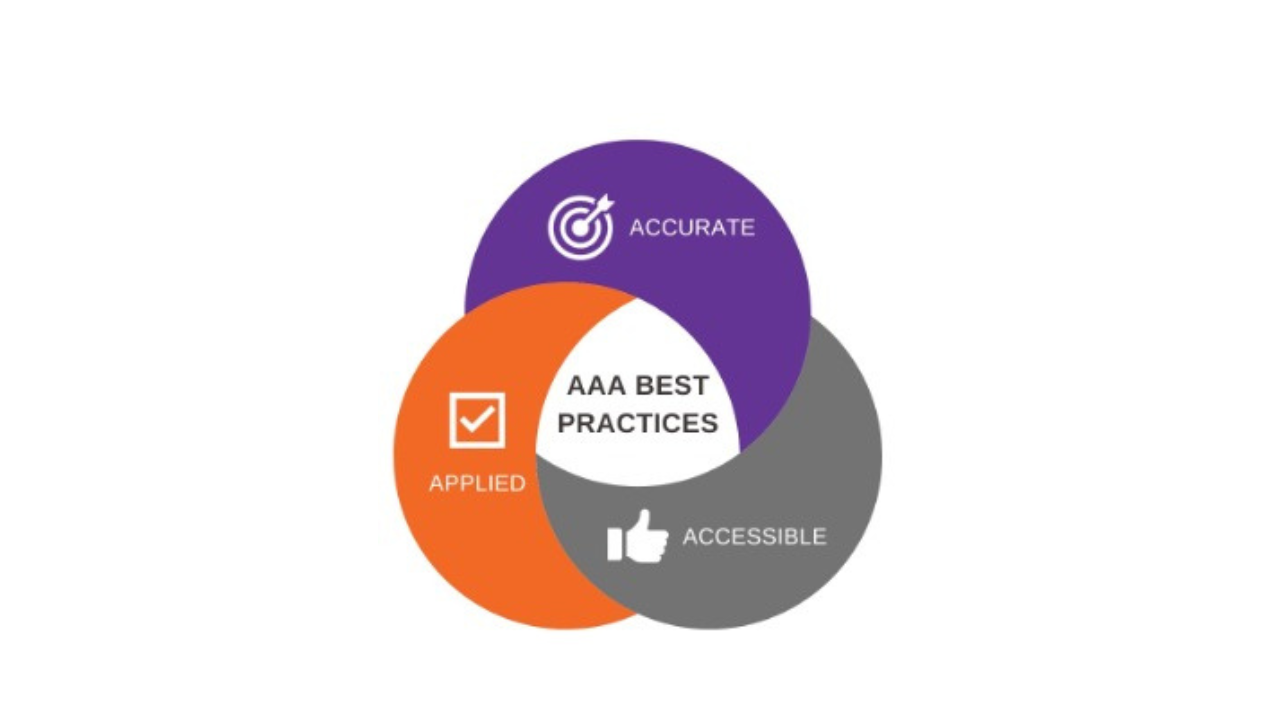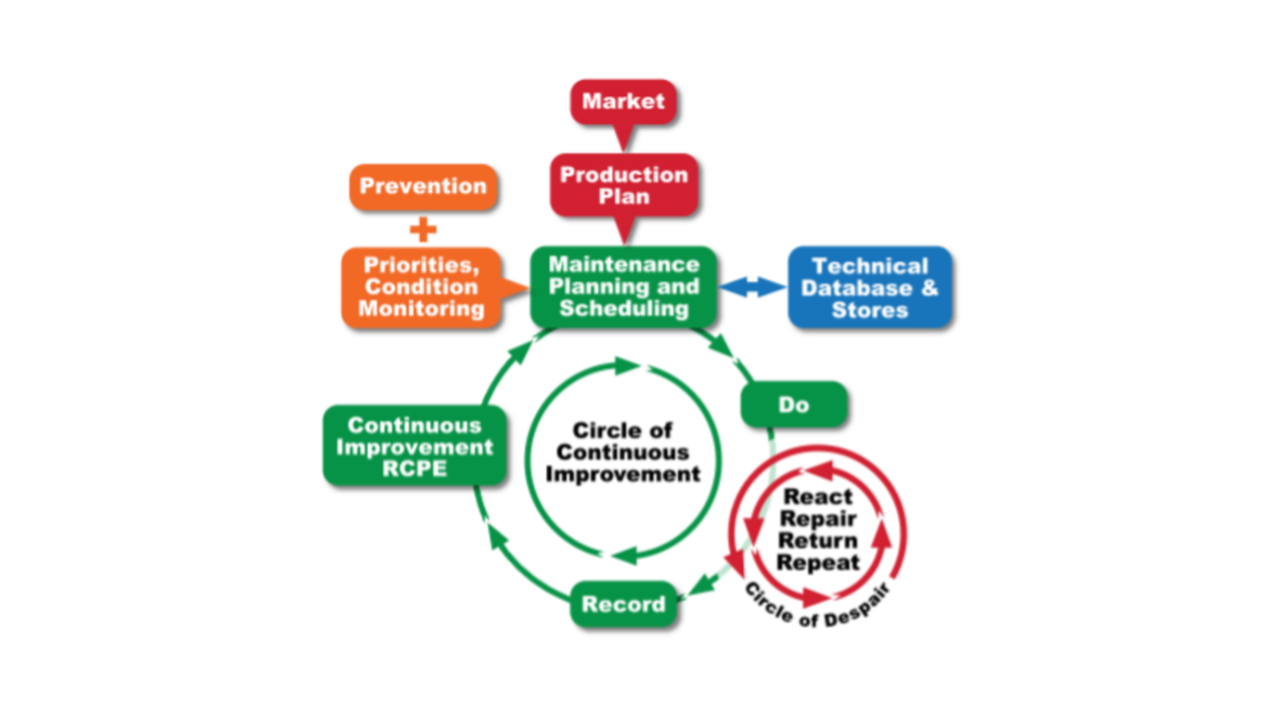Put Your Equipment Drawings, Manuals and Pictures to Work for Cost Savings
John Sewell, Consultant, IDCON INC
Posted on 03/09/2023
A key principle of planning: the less skilled or experienced a work crew, the more detail is needed in work instructions and equipment drawings.
An experienced crew will not need as many instructions as a crew who has never worked on a particular piece of equipment. Similarly, a skilled planner can often scope a job after a brief field tour based on their experience with the equipment and knowledge of work practices. However, someone new to planning or new to a particular area of the plant will have to spend more time researching the required job steps.
When planning and scheduling maintenance work, it’s common to encounter a job that hasn’t been done before. A standard job plan will not have been created and the planner, no matter the amount of previous experience, will need to spend extra time scoping the job and determining how best to perform the work. When situations like this arise, the availability of up-to-date drawings, manuals, and pictures prove to be an invaluable resource.
Which Drawings, Manuals, and Pictures are Most Valuable for Maintenance Work?
While there is a wide variety of types of drawings, there are a few general categories that are most beneficial for planning maintenance work. Some key drawing types are:
- General layout drawings
- Piping and instrument diagrams
- Equipment assembly drawings
- Exploded parts diagrams
- Wiring diagrams
Drawings used for planning and executing work will ideally contain the relevant details without being cluttered with unnecessary information.
Equipment Drawing Template Example:
Using Equipment Drawings for Planning and Scheduling Maintenance Work
Equipment drawings will usually be identified by a number and should contain clear notes on which equipment or system is shown. Good drawings have a large enough drawing field to provide legible detail. Ideally, a parts list will be shown that identifies the individual components on the drawing and links it to plant-specific part numbers that match the Computerized Maintenance Management System (CMMS).
Manuals are another common source of information required for planning and executing work. Manuals often include installation, operation, and maintenance instructions. They are commonly referred to as “IOM” manuals as an acronym for the three types of information usually included.
Using Equipment Manuals for Planning and Scheduling Maintenance Work
There will be useful information in the sections on installation and operation that will impact the long-term reliability of the equipment, but it’s the maintenance section that is commonly used by planners and work crews. Some typical information located in manuals includes:
- Preventive maintenance tasks such as inspections and lubrication with suggested frequencies
- Condition based maintenance tasks and allowable limits
- Proactive or time-based maintenance activities such as wear part replacement with frequencies
- Rebuild procedures with required clearances and tolerances
Manuals should be reviewed as part of commissioning new equipment. Inspection and lubrication instructions can be incorporated into the plant preventive maintenance program and only referred to later if an issue arises. Take care when using manufacturer suggested frequencies as these are often conservative and will need to be evaluated and tailored to the plant. Instructions on routine maintenance activities should be pulled from manuals and incorporated into standard job plans.
Pictures can be a valuable source for historical information about a piece of equipment.
Using Equipment Pictures for Planning and Scheduling Maintenance Work
A picture of a final assembly can document the overall condition of a piece of equipment easier than a written report. Pictures often allow for easier understanding about the internal design of equipment than a drawing. Pictures of the problem with the equipment can give clarity to standard job plans by allowing crews to review the design and think about the needed repairs prior to work beginning. Pictures can also aid pre-job safety check sheets by triggering clarity around possible hazards that may be encountered. Pictures can also allow better Root Cause Problem Elimination (RCPE) performance by documenting as-found conditions and keeping an efficient historical record.
Download your FREE Root Cause Problem Elimination Guide now!
What are the Best Practices for Using Equipment Drawings, Manuals, and Pictures to Aid Maintenance Work?
There are three best practices that will allow equipment drawings, manuals, and pictures to enable high quality planning and scheduling. Focus on keeping the documents accurate, accessible, and applied.
Accurate
Keeping plant drawings updated and accurate can be a challenge. Having a documented standard that defines the requirements for drawings is necessary. Also document the review methods and frequencies. Clearly identifying the person responsible for keeping the drawings updated will eliminate any confusion with drawing ownership. Manuals and pictures should also be reviewed on a periodic basis and updated. Add manuals and pictures to the file structure as new equipment is added to the plant and delete or archive old information if equipment is removed from service.
Accessible
Having drawings, manuals, and pictures in an electronic and searchable format is ideal. Some drawing databases do not allow for easy searching so a drawing index that contains the drawings needed for planning and scheduling should be available. Save equipment manuals and pictures on the plant’s system that can be accessed by people involved in planning and scheduling. A file structure that matches the equipment hierarchy in the Computerized Maintenance Management System (CMMS) works well.
Applied
Conduct routine checks of your planning and scheduling processes to ensure the documents are being used. Information from drawings, manuals, and pictures should be included in work instructions and standard job plans. When new equipment is installed, review the manuals. Add inspections to condition based maintenance routes. Create new standard job plans and add information from the manuals for rebuilds or other routine maintenance activities.
How Equipment Drawings, Manuals, and Pictures Fit into the Technical Database
Equipment drawings, manuals, and pictures are essential elements of the technical database. Each play an important role in supporting world class planning and scheduling. Watch the video above for more on the technical database.

Drawings will need to be consulted for jobs where the planner and crews have no previous experience. Relevant information from manuals should be added to standard job plans to ease future use. Pictures can be used to document the as-found condition of equipment during inspections or while preforming Root Cause Failure Analysis. Keeping the documents easy for the crews, maintenance supervisors, and planners to access, while also keeping them up to date, can be a major challenge. A management system with clear ownership will be necessary. Routine checks of job plans and condition based maintenance routes will reveal to what extent the information is being used. With proper systems in place and clear oversite, drawings, manuals and pictures can be used to improve the output of the planning process, make the work in the field more efficient, and help reduce the overall cost of maintenance.
The technical database is made up of eight components, if you’re interested in learning more about each component follow along with the series as it is updated each month.
- Equipment Hierarchy
- Equipment Numbering and Labeling
- Drawings, Manuals, and Pictures
- Engineering Standards
- Bill of Materials
- Criticality
- Standard Job Plans

John Sewell, CMRP
John Sewell, CMRP is a Consultant with IDCON INC, a specialized management consulting firm in the field of reliability and maintenance management. As a consultant, John works with clients in any industry to improve reliability and lower manufacturing and maintenance costs through hands-on coaching and training.
Related Articles
What is the Technical Database and How Does it Affect Planning and Scheduling?
Practical Guide to Equipment Hierarchy
How to Label and Number Equipment for Easy Identification

Engineering Standards to Help Lower Cost




